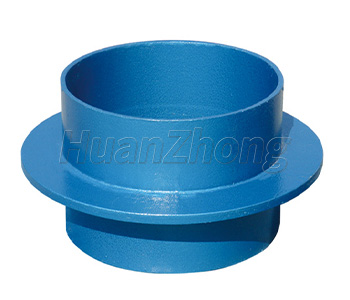Design and Stability of Rigid Waterproof Casing DN300.
Design and Stability of Rigid Waterproof Casing DN300. The design and stability of rigid waterproof casing DN300 are crucial factors in ensuring the efficiency and reliability of underground construction projects. This article will discuss the key considerations and principles involved in the design and stability of rigid waterproof casing DN300.
When designing a rigid waterproof casing DN300, several factors need to be taken into account. Firstly, the material of the casing must be selected carefully. Common materials used for rigid waterproof casings include concrete, steel, and plastic. Each material has its own advantages and limitations, and the choice depends on factors such as project requirements, site conditions, and budget constraints.
The design of the casing should also consider the external loads and pressures it will be subjected to. This includes the weight of the surrounding soil, groundwater pressure, and any potential live loads such as traffic loads or dynamic forces. The casing must be designed to resist these loads and maintain its stability throughout its service life.
To ensure the stability of the rigid waterproof casing DN300, proper installation and reinforcement techniques are crucial. The casing should be installed using appropriate methods such as driven, jacked, or bored installations, depending on the site and project requirements. The installation process should be carefully monitored to avoid any damage or misalignment that could compromise the stability of the casing.
In terms of reinforcement, various techniques can be employed to enhance the stability of the casing. These include the use of steel reinforcement bars, post-tensioning, and grouting. Steel reinforcement bars can be placed within the casing to provide additional strength and resistance against external loads. Post-tensioning involves the application of tensioning forces to the casing after installation, which helps to improve its stability and load-carrying capacity. Grouting involves injecting a special material, such as cementitious grout, around the casing to further enhance its stability and prevent water seepage.
Moreover, proper waterproofing measures must be implemented to prevent water seepage and protect the integrity of the casing. This can include the use of waterproof membranes, sealing compounds, or specialized coatings applied to the casing surface. These measures help to create a barrier against water infiltration, protecting the casing from corrosion and potential structural damage.
Regular monitoring and inspection of the rigid waterproof casing DN300 are essential for ensuring its long-term stability. This involves conducting visual inspections, measuring any deflections or deformations, and monitoring groundwater levels. Any signs of distress or displacement should be addressed promptly to maintain the stability and performance of the casing.
In conclusion, the design and stability of rigid waterproof casing DN300 are critical considerations in underground construction projects. Factors such as material selection, load analysis, proper installation, reinforcement techniques, and waterproofing measures should be carefully considered to ensure the long-term stability and functionality of the casing. By implementing sound design principles and following best practices, engineers can construct durable and reliable rigid waterproof casing DN300 that meets the requirements of the project and provides long-term performance.
